The first intervention of the Cerro Blanco Protected Forest master plan faces the visitors to the forest magnitude. The design promotes the collective experience of being sitting in the front row. The end of the main axis lets the guide or the teacher the best location to address the audience spread in the two lateral wings. With this action, the viewpoint works as an open classroom for the school groups that visit the forest, which represents the largest park visitors.
Being the first project of the plan, the viewpoint works as a prototype that allowed us to understand the whole scope of the technology that we are planning to apply in the architectonic interventions. Common pieces of wood were assembled in a simple way, getting something that is neither common nor simple; the architecture dispenses of final finishes and its primitive form is enough to contain us. The viewpoint wood is not even painted, its darkness is due to a vernacular Japanese method of wood preserving; it burns the surface layer, this mineralizes and protects it from pests that could attack it.

Learning Viewpoint, Cerro Blanco Protected Forest, Guayaquil, Ecuador, 2022. Architects David Barragán, Pascual Gangotena, Maríaluisa Borja and Esteban Benavides (authors) / Al Borde
Foto divulgación/ disclosure photo [Al Borde]

Learning Viewpoint, Cerro Blanco Protected Forest, Guayaquil, Ecuador, 2022. Architects David Barragán, Pascual Gangotena, Maríaluisa Borja and Esteban Benavides (authors) / Al Borde
Foto divulgación/ disclosure photo [Al Borde]
The timber structure that lets landscape contemplation is covered with a canvas impregnated with a cementitious mortar suspended in a tensioned structure. Guayaquil Holcim Innovation Center, researched and developed a hybrid adaptive geometry roof, using a high-strength mortar sprayed on a textile.

Learning Viewpoint, Cerro Blanco Protected Forest, Guayaquil, Ecuador, 2022. Architects David Barragán, Pascual Gangotena, Maríaluisa Borja and Esteban Benavides (authors) / Al Borde
Foto/ photo Maria Veronica Paszkiewicz

Learning Viewpoint, Cerro Blanco Protected Forest, Guayaquil, Ecuador, 2022. Architects David Barragán, Pascual Gangotena, Maríaluisa Borja and Esteban Benavides (authors) / Al Borde
Foto/ photo Maria Veronica Paszkiewicz

Learning Viewpoint, Cerro Blanco Protected Forest, Guayaquil, Ecuador, 2022. Architects David Barragán, Pascual Gangotena, Maríaluisa Borja and Esteban Benavides (authors) / Al Borde
Foto divulgación/ disclosure photo [Al Borde]
Based on bibliographic references, the use of a flexible textile formwork comes from years post World War I, where its first use was organic fabrics for marine engineering and geotechnical applications. With this starting point, multiple tests were carried out in the lab to evaluate fabrics of different compositions, stiffness, and elongation. The main goal was to evaluate the compatibility and adhesion capacity with the cementitious mortar, so, the textile would act as an air-suspended "formwork". The mortar was technically designed to obtain high initial strengths and fluidity for the projection and the necessary consistency to adhere it and additionally provide low permeability in the hardened state protecting the textile from weathering and UV degradation.
Several prototypes were tested in the lab and on-site to achieve the best mortar projection system and the maximum allowable textile catenary deformation, all of these before the final assembly on the viewpoint.
Through a life cycle analysis, Guayaquil Holcim Innovation Center determine a 68% reduction of the carbon footprint embedded in its materials with respect to a concrete tile roof per square meter.

Learning Viewpoint, Cerro Blanco Protected Forest, Guayaquil, Ecuador, 2022. Architects David Barragán, Pascual Gangotena, Maríaluisa Borja and Esteban Benavides (authors) / Al Borde
Foto/photo Jag Studio

Learning Viewpoint, Cerro Blanco Protected Forest, Guayaquil, Ecuador, 2022. Architects David Barragán, Pascual Gangotena, Maríaluisa Borja and Esteban Benavides (authors) / Al Borde
Foto/photo Jag Studio

Learning Viewpoint, Cerro Blanco Protected Forest, Guayaquil, Ecuador, 2022. Architects David Barragán, Pascual Gangotena, Maríaluisa Borja and Esteban Benavides (authors) / Al Borde
Foto/photo Jag Studio
datasheet
project
Learning Viewpoint
location
Cerro Blanco Protected Forest, Guayaquil, Ecuador
year
Design: 2021
Building: 2022
architecture
Architects David Barragán, Pascual Gangotena, Maríaluisa Borja and Esteban Benavides (authors); architect Maria Veronica Paszkiewicz (collaborator) / Al Borde
structural engineering
Patricio Cevallos
construction
Miguel Ramos
commision
Fundación Pro Bosque
support
Holcim Ecuador
photo
Jag Studio, Maria Veronica Paszkiewicz and Al Borde



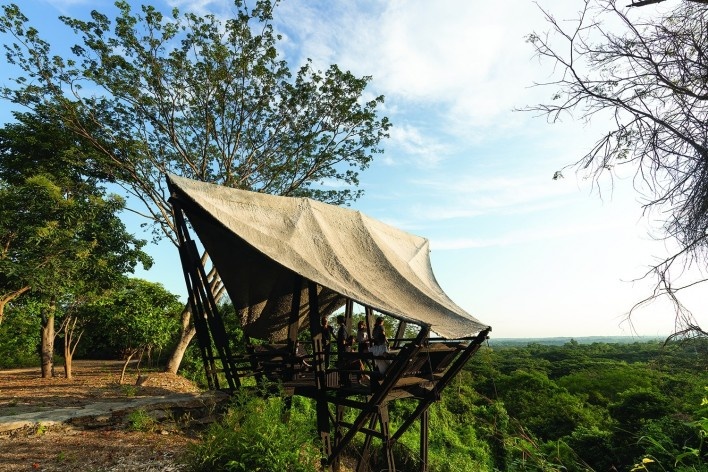
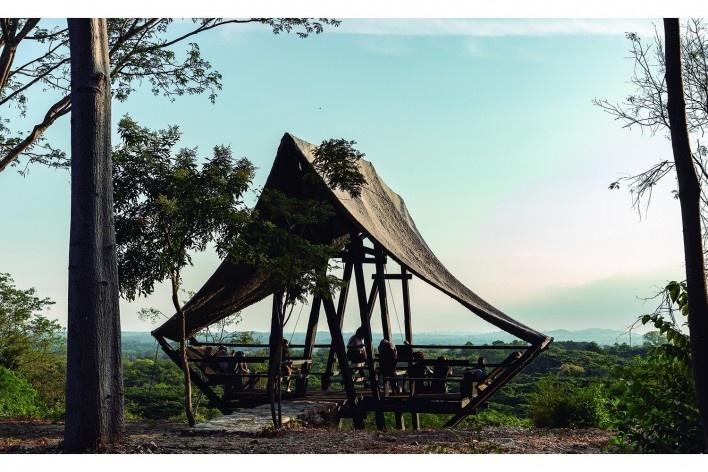
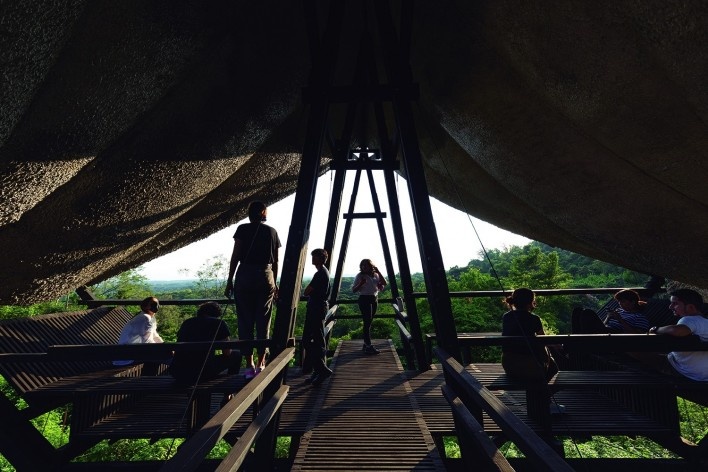
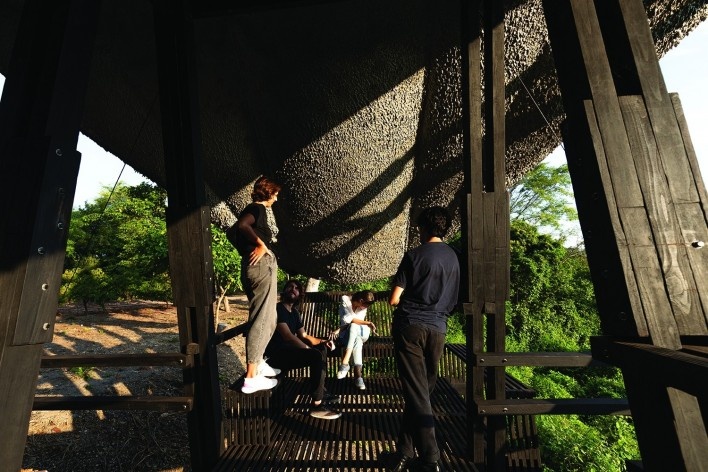
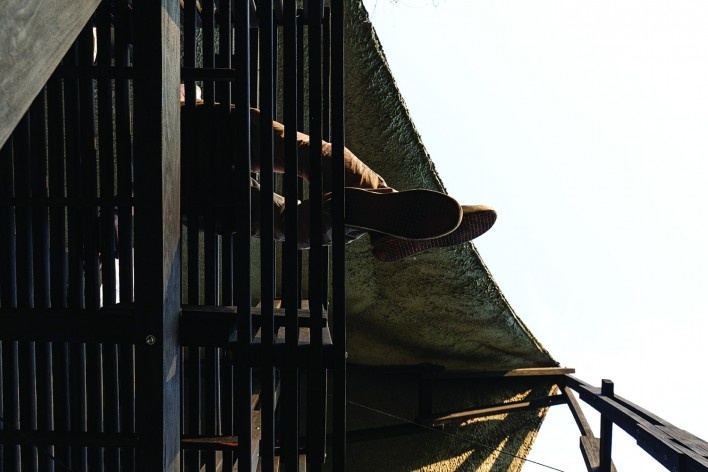
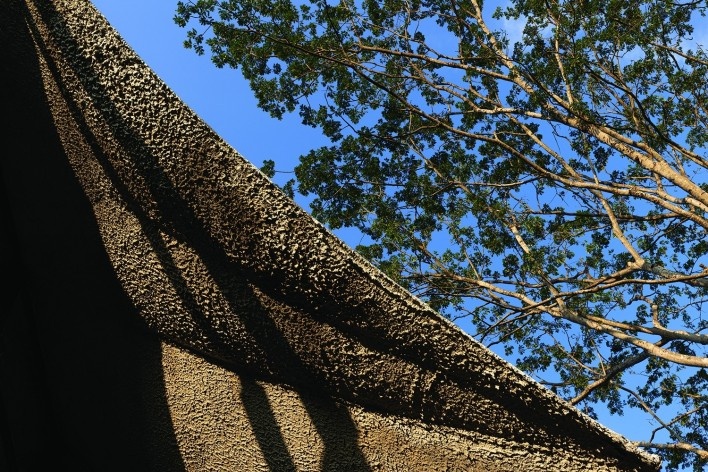
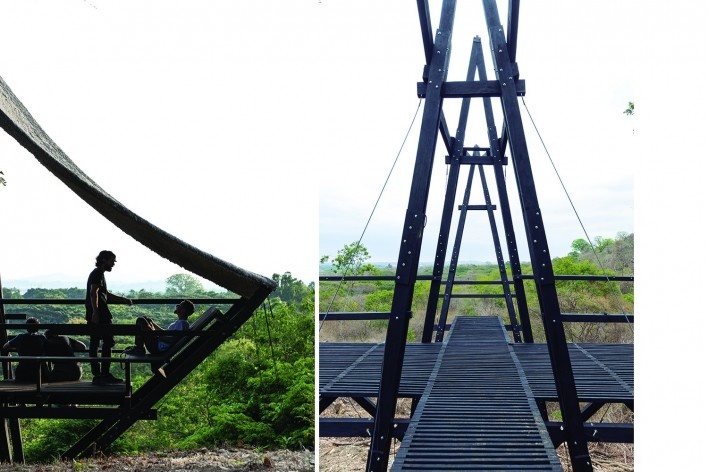
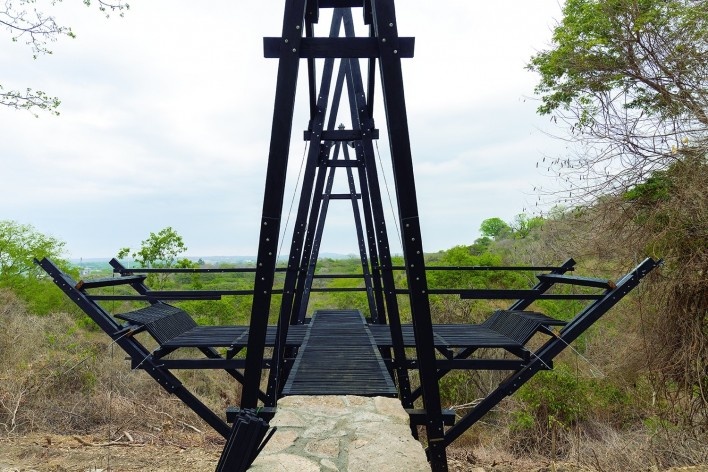
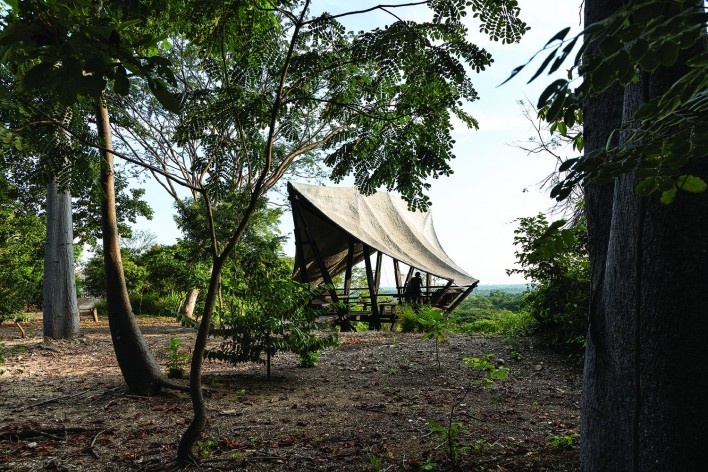
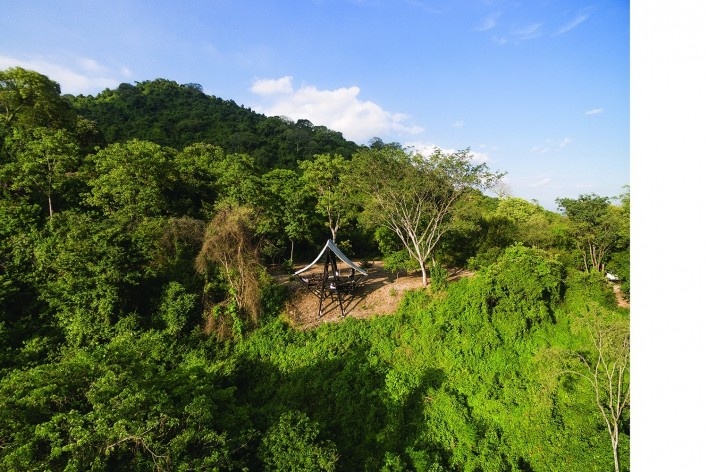
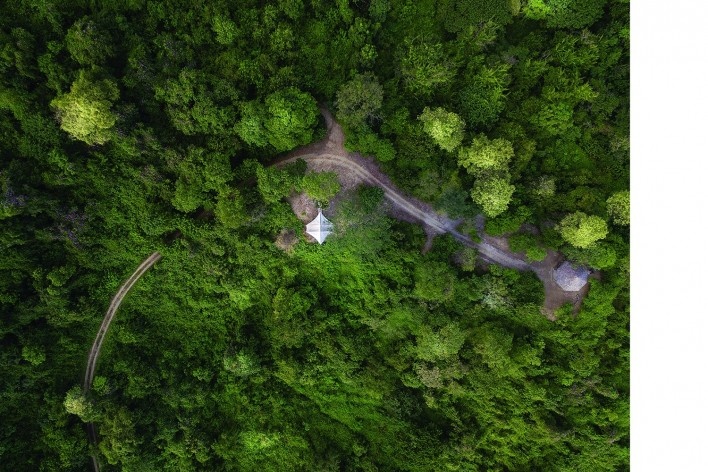
![Learning Viewpoint, plan, Cerro Blanco Protected Forest, Guayaquil, Ecuador, 2022. Architects David Barragán, Pascual Gangotena, Maríaluisa Borja and Esteban Benavides (authors) / Al Borde<br />Imagen divulgación/ disclosure image [Al Borde]](https://vitruvius.com.br/media/images/magazines/grid_12/4ea23f265ba4_miradoraula20.jpg)
![Learning Viewpoint, section, Cerro Blanco Protected Forest, Guayaquil, Ecuador, 2022. Architects David Barragán, Pascual Gangotena, Maríaluisa Borja and Esteban Benavides (authors) / Al Borde<br />Imagen divulgación/ disclosure image [Al Borde]](https://vitruvius.com.br/media/images/magazines/grid_12/18447280f92a_miradoraula21.jpg)











![Learning Viewpoint, plan, Cerro Blanco Protected Forest, Guayaquil, Ecuador, 2022. Architects David Barragán, Pascual Gangotena, Maríaluisa Borja and Esteban Benavides (authors) / Al Borde<br />Imagen divulgación/ disclosure image [Al Borde]](https://vitruvius.com.br/media/images/magazines/gallery_thumb/4ea23f265ba4_miradoraula20.jpg)
![Learning Viewpoint, section, Cerro Blanco Protected Forest, Guayaquil, Ecuador, 2022. Architects David Barragán, Pascual Gangotena, Maríaluisa Borja and Esteban Benavides (authors) / Al Borde<br />Imagen divulgación/ disclosure image [Al Borde]](https://vitruvius.com.br/media/images/magazines/gallery_thumb/18447280f92a_miradoraula21.jpg)
